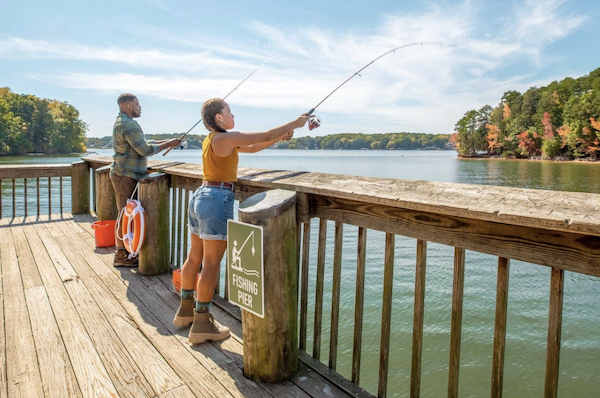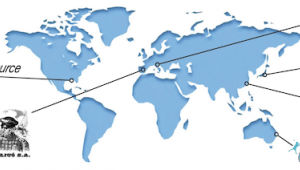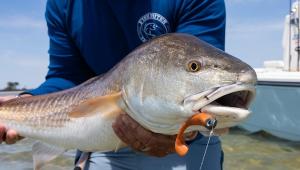US tackle trade buoyed by another participation rise

In a year marked by instability, families across the USA increasingly found time to connect by picking up a rod and reel, resulting in 54.5 million Americans going fishing in 2022.
Taking into account lake, river, stream and sea fishing – both onshore and from boats – that’s a four per cent increase on the figures from 2021, according to the latest research conducted by the Recreational Boating and Fishing Foundation (RBFF).
This is all just slightly below records set in 2020 when Americans took to fishing in huge numbers as a safe, outdoor pandemic activity. However, the 2022 figures still outpaced pre-Covid participation in 2019.
The study also found that fishing promotes wellness, improves bonds with family members and forges a deep connection with nature that many Americans strive to achieve together.
RBFF’s president and CEO, Dave Chanda, said: “While the overall participation numbers are good news, we have our work cut out to continue welcoming youth to the sport.
“After this Covid bump in 2020, fishing’s national participation rate among children aged six to 12 dipped to one percentage point in 2021, then another in 2022. This is the wrong direction.
“On the brighter side, participant numbers grew by three per cent to 7.8 million child participants, –over one million higher than a decade ago.”
And it’s not just younger children where this is a concern. Fishing’s national participation rate among teens – children aged 13 to 17 – also fell a percentage point in 2022.
That said, actual participant numbers increased slightly to 4.9 million but remained above the 2019 level of 4.3 million. The RBFF said this represents an average annual increase of six per cent in adolescent participation between 2019 and 2022.
Meanwhile, the youngsters who are going fishing are going more often. Total annual outings among children aged six to 12 have increased five per cent to 105 million in 2022, the second highest level on record.
Dave added: “That is a lot of kids fishing! It is the teens who are falling off. Not only were children more likely than adolescents to say they wanted to fish more, but outings among adolescents also fell two per cent to 82 million.”
Engagement of youth anglers reaches across family ties. Adults with children, particularly younger ones, went fishing at much higher levels than adults without children.
In fact, over the past three years, the participation rate in households with children aged six to 12 and adolescents agesg13 to 17 reported annual growth averaging six per cent and five per cent,
respectively. Comparatively, participation in households with no children grew by only three per cent during the same period.
Just as importantly, when youngsters see their friends take to the water, they are keen to join in too.
Fifteen per cent of non-participating Americans aged 6 to 17 expressed interest in fishing in 2022, up from 11 per cent in 2020. However, fewer Black and Hispanic children and adolescents were as keen than in 2021, underscoring the need for expanded outreach to engage underrepresented populations.
Dave continued: “All the kids are waiting for an invitation, which is where we come in. The momentum exists, we need to capitalise on it.
“Hispanic participation rose from 4.7 million in 2021 to 5.1 million in 2022, and women’s participation approached the pandemic/2020 all-time high, representing 36 per cent of total anglers.
“The data underscores the importance of introducing fishing early, as 86 per cent of current fishing participants fished before age 12. Participation rates fall sharply after a child turns 18, making families with young children the key to growing future participation.
“RBFF is at the helm of these efforts. By understanding participants’ demographics, motivations,and barriers, the entire fishing industry can better nurture a new generation of fishing enthusiasts while retaining those new to the sport.
“Connecting women, youth and people of colour to fishing will ensure that our nation’s waterways are protected, our communities are healthy and our industry is thriving.”
- Log in or register to post comments

















